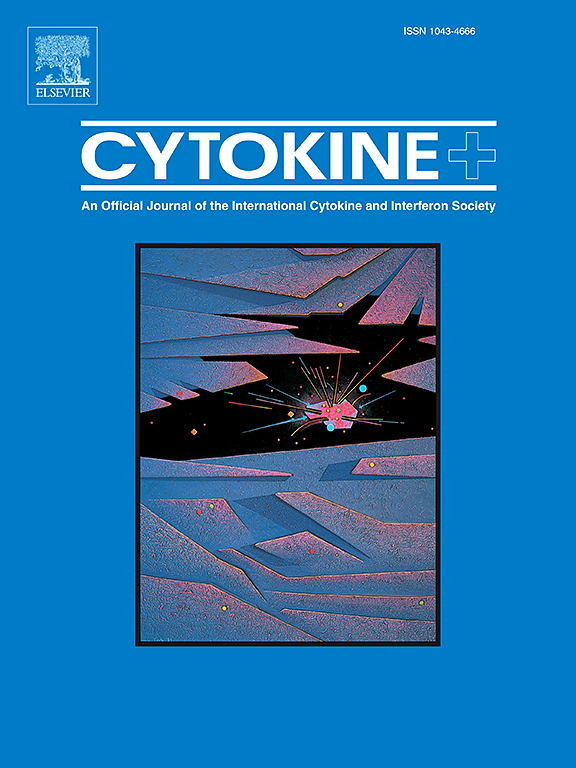氢联合埋针治疗通过STING信号通路抑制NLRP3炎性体激活,减轻创伤性脑损伤
IF 3.7
3区 医学
Q2 BIOCHEMISTRY & MOLECULAR BIOLOGY
引用次数: 0
摘要
背景:创伤性脑损伤(TBI)是世界范围内致残和死亡的主要原因,目前尚无有效的治疗方法。分子氢(H2)对TBI具有潜在的治疗手段。然而,很少有研究表明氢联合埋针治疗(H2 + NET)在TBI中的作用,其确切机制尚不清楚。在这里,我们阐明了H2 + NET在TBI进展中的潜在机制。方法采用控制性皮质冲击法(CCI)建立脑外伤小鼠模型。神经功能测定采用mNSS试验。采用尼氏染色法评价神经元损伤,TUNEL法检测神经元凋亡,ELISA法检测腺苷、ATP及炎症因子水平。采用qRT-PCR分析炎症因子的相对mRNA水平。免疫荧光染色检测Iba-1、NLRP3、STING的表达。Western blot检测NLRP3炎性小体相关蛋白和STING信号通路相关蛋白的表达。结果sh2或NET均能减轻脑损伤,降低脑含水量。CCI诱导促进小胶质细胞活化和炎症反应,从而激活NLRP3炎性体活性和STING信号通路,这一过程被H2或NET处理部分逆转。然而,与H2或NET单独治疗组相比,H2 + NET显著改善了脑水肿,并进一步抑制了TBI小鼠的炎症反应、NLRP3炎性体激活和STING通路激活。结论氢联合埋针疗法通过STING信号通路抑制NLRP3炎性体的激活,是一种很有前景的TBI干预方法。本文章由计算机程序翻译,如有差异,请以英文原文为准。

Hydrogen combined with needle-embedding therapy alleviates traumatic brain injury by inhibiting NLRP3 inflammasome activation via STING signaling pathway
Background
Traumatic brain injury (TBI) is a primary cause of disability and death worldwide and with unmet effective therapies. Molecular hydrogen (H2) exerts latent therapeutic means for TBI. Nevertheless, few studies have illustrated the roles of hydrogen combined with needle-embedding therapy (H2 + NET) in TBI and its exact mechanism remains unclear. Here, we elucidated the underlying mechanisms of H2 + NET in the TBI progression.
Methods
Controlled cortical impact (CCI) method was conducted to construct TBI mouse model. The mNSS test was used for neurological function measurement. Nissl staining for evaluating neuronal injury, TUNEL assay for determining neuronal apoptosis and ELISA assay was applied for adenosine, ATP level and inflammatory cytokines determination. The relative mRNA levels of inflammatory elements were assessed by qRT-PCR analysis. Iba-1, NLRP3 and STING expression were determined through immunofluorescence staining. The expression of NLRP3 inflammasome related proteins and STING signaling pathway associated proteins were evaluated using Western blot.
Results
H2 or NET treatment mitigated brain injury and reduced brain water content in CCI-induced TBI mouse model. CCI induction promoted microglia activation and inflammatory response, thereby activating the NLRP3 inflammasome activity and STING signaling pathway, which was partly reversed by H2 or NET treatment. However, H2 + NET significantly ameliorated brain oedema, and further inhibited inflammatory response, NLRP3 inflammasome activation and STING pathway activation in TBI mice when compared to the H2 or NET alone treatment group.
Conclusion
Hydrogen combined with needle-embedding therapy acts as a promising intervention method for TBI through inhibiting NLRP3 inflammasome activation via STING signaling pathway.
求助全文
通过发布文献求助,成功后即可免费获取论文全文。
去求助
来源期刊

Cytokine
医学-免疫学
CiteScore
7.60
自引率
2.60%
发文量
262
审稿时长
48 days
期刊介绍:
The journal Cytokine has an open access mirror journal Cytokine: X, sharing the same aims and scope, editorial team, submission system and rigorous peer review.
* Devoted exclusively to the study of the molecular biology, genetics, biochemistry, immunology, genome-wide association studies, pathobiology, diagnostic and clinical applications of all known interleukins, hematopoietic factors, growth factors, cytotoxins, interferons, new cytokines, and chemokines, Cytokine provides comprehensive coverage of cytokines and their mechanisms of actions, 12 times a year by publishing original high quality refereed scientific papers from prominent investigators in both the academic and industrial sectors.
We will publish 3 major types of manuscripts:
1) Original manuscripts describing research results.
2) Basic and clinical reviews describing cytokine actions and regulation.
3) Short commentaries/perspectives on recently published aspects of cytokines, pathogenesis and clinical results.
 求助内容:
求助内容: 应助结果提醒方式:
应助结果提醒方式:


